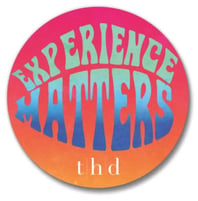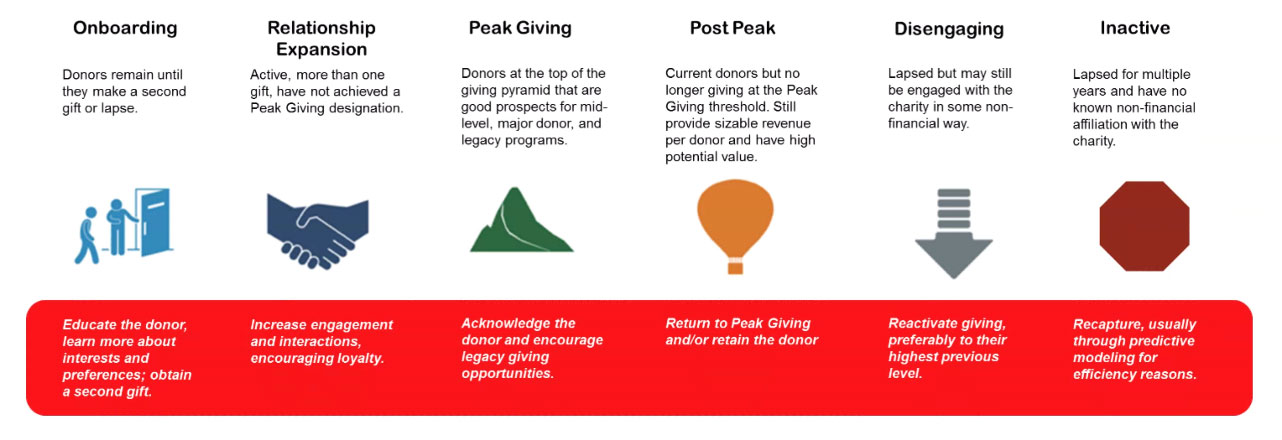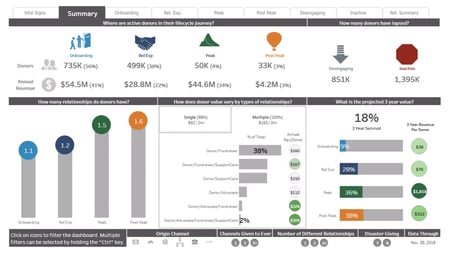Before you read the rest of this blog, I'd like to ask you a question.
How do you think your donors would rate their experience with you? On a scale of 1 to 10. Not your mission or your purpose, but the experience they have with you?
Be honest.
Do you think they would tell you that they feel truly heard, appreciated, and recognized? That they are getting something out of the value exchange? Do they feel like you know something about them — beyond when their last gift was or how much it was for?
So, with that rattling around in your brain, I'd like you to meet my friend Jane, your donor — everyone's donor, really.
 |
Who is Jane?
Well, Jane gets direct mail and email, and sees your social posts and banner ads. She's largely channel agnostic in how she consumes information, and as she bounces between channels, her peers play an important role in her decision-making process.
She's busy, impatient, maybe a touch skeptical — and her favorite consumer brands (Amazon, Patagonia, et al.) have raised the bar in terms of what she expects experientially in return for her money.
Finally, maybe most importantly, Jane doesn't define herself in the way many fundraisers do. She doesn't see herself as an active, mid-level, major, or lapsed donor.
She probably doesn't even know what a "sustainer" is.
She's a person, a person who cared enough to make a contribution to your organization.
Once we have acquired Jane and she's gone from being unknown to known, what do we want her to do next?
Make another gift, right? So we ask her — probably a lot.
But what does Jane want? What does Jane expect?
Maybe she wants to make another gift, and if she does, great! Or maybe she just wants to learn more about who you are or what you do, what her contribution will help accomplish — maybe she wants to be an advocate or start a fundraiser of her own.
Maybe she doesn't want to do anything at all.
As fundraisers, we look at retention rates and we get excited (with good reason) about multi-year retention rates of 70% or 75%, but that's a percentage of a percentage. Truth is, somewhere around three-quarters of your donors make one gift and are never heard from again. Our research shows that the average lifespan of a donor is less than two years.
Of course, this leads to a never-ending (and costly) search for more Janes.
To mitigate this, we tend to ask "how?" How do we retain Jane, how do we get her to deepen her investment?
At THD, we propose it's time to start asking "why?"
Why did we lose Jane? What about her experience caused her to drift away?
It's time to shift our focus to understanding Jane the person, not the donor — what motivates her, what excites her, and what will keep her engaged with us longer.
How do we value a donor?
What value exists in a donor who's empowered and motivated to go deeper? There is real value in advocacy. There is earned media value in that social video share. And we have all seen the explosion and tremendous impact of peer-to-peer fundraising.
Our data makes a compelling case for the value of multiple relationships. On average, donors with two organizational relationships (e.g., donor/advocate or donor/fundraiser) are 49% more valuable in year one and 38% more valuable five years in. With three relationships, the value factor is even greater (e.g., donor/fundraiser/advocate), 97% and 85%, respectively.
Heck, in 2017 alone, 63 million Americans volunteered 8 billion hours of their time to nonprofits. At $24.69 per hour, that accounts for a staggering $197.5 billion in value*. That's billion, with a B.
Bottom line: the key to increasing donor value is a better experience that gives the donors options, multiple ways, and reasons to remain engaged — which ultimately extends donor lifespan.
The more ways they connect (or don't), the more we can learn. And the more we know, the better we can make the experience.
We call this the Donor Experience Value Chain.
With so much data available to us, we can develop strategies offering touchpoints that continually inform us about what is important to donors. While every stage might not include giving, the bond between an organization and the donor becomes stronger, the term of the relationship extends, and the opportunities to ask become greater and land with more authenticity and impact.
We have identified six key stages in the donor experience. These stages will seem familiar in many ways, but it's not the definition of the stages that is important. It is understanding the value of donors in these stages. Having a view into how people are migrating can help us refine our approaches and move people into/keep people in the most valuable stages.
So, this might be starting to sound a lot like donor journeys.
Journeys are presented as a set of predicted or preferred paths. While these are helpful, we think that looking at an experience, and the value of a donor at various stages of that experience, is of far greater value to a fundraiser. We aren't trying to map people along a particular journey because, ultimately, with the amount of channels and engagement points available to a donor, the number of journeys is almost infinite.
This is where things are getting pretty exciting here at THD.
We are working to aggregate the data available to us into views that will help us understand how donors on file are progressing through their lifecycle, the value over the course of their lifetime, and how our work is influencing these moves.
In addition to the standard KPIs we all live by, we are introducing a new way to understand the health and composition of your file. This will help us augment and improve the way in which we segment and communicate with our donors, extend the length of their relationship with an organization, and, ultimately, improve the lifetime value of a donor.
We will be at the DMA conference this week in D.C. talking all about donor experience. If you see someone wearing a button that looks like this, come say "hello"!

*Independent Sector https://independentsector.org/news-post/value-of-volunteer-time-release/








